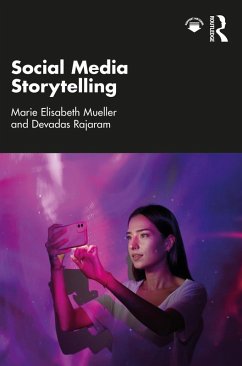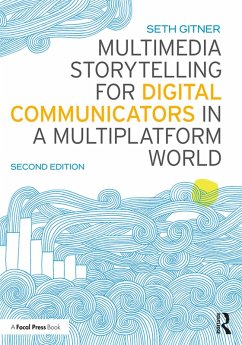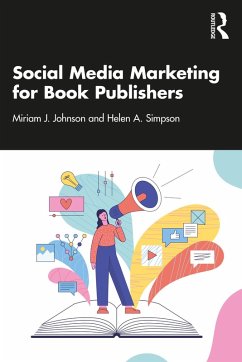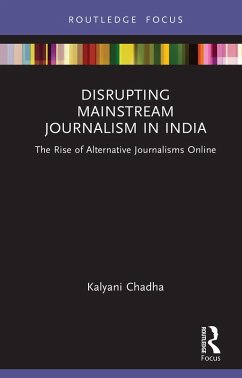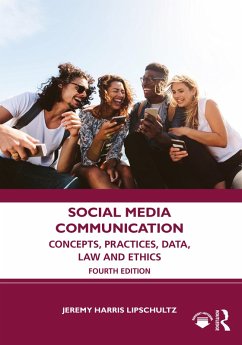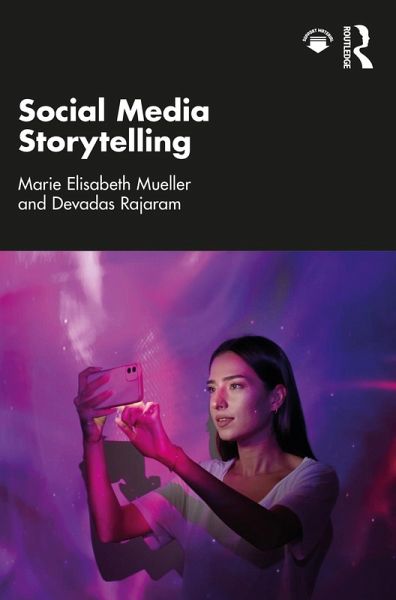
Social Media Storytelling (eBook, PDF)
Versandkostenfrei!
Sofort per Download lieferbar
37,95 €
inkl. MwSt.
Weitere Ausgaben:

PAYBACK Punkte
19 °P sammeln!
Offering a radical new toolbox for digital storytellers, this key text contains everything today's media practitioners need to know about conceptualising, editing and producing stories for online platforms and audiences.This book teaches readers practical skills for increasing their reach online, strengthening their personal brand and improving follower counts across the social web, including main platforms such as Twitter, Snapchat, TikTok, Instagram and Facebook. Encouraging a DIY approach, the authors guide readers through various platforms and reveal which are best suited to their users an...
Offering a radical new toolbox for digital storytellers, this key text contains everything today's media practitioners need to know about conceptualising, editing and producing stories for online platforms and audiences.
This book teaches readers practical skills for increasing their reach online, strengthening their personal brand and improving follower counts across the social web, including main platforms such as Twitter, Snapchat, TikTok, Instagram and Facebook. Encouraging a DIY approach, the authors guide readers through various platforms and reveal which are best suited to their users and how to customise stories for different channels. Topics covered include storytelling with smartphones (iOS and Android), storyboarding, framing, sequencing, shooting and editing high-quality content, and evaluating the success of content and campaigns. Contributions from five industry experts expand on privacy, community building and collaboration. The book concludes by looking to the future of social media storytelling, with industry professionals offering predictions for trends to watch out for.
Social Media Storytelling is an essential resource for students of mobile and multimedia journalism, digital media and media marketing, as well as for professionals who want to learn how to create compelling content and tell impactful brand stories.
The book also features accompanying online exercises.
This book teaches readers practical skills for increasing their reach online, strengthening their personal brand and improving follower counts across the social web, including main platforms such as Twitter, Snapchat, TikTok, Instagram and Facebook. Encouraging a DIY approach, the authors guide readers through various platforms and reveal which are best suited to their users and how to customise stories for different channels. Topics covered include storytelling with smartphones (iOS and Android), storyboarding, framing, sequencing, shooting and editing high-quality content, and evaluating the success of content and campaigns. Contributions from five industry experts expand on privacy, community building and collaboration. The book concludes by looking to the future of social media storytelling, with industry professionals offering predictions for trends to watch out for.
Social Media Storytelling is an essential resource for students of mobile and multimedia journalism, digital media and media marketing, as well as for professionals who want to learn how to create compelling content and tell impactful brand stories.
The book also features accompanying online exercises.
Dieser Download kann aus rechtlichen Gründen nur mit Rechnungsadresse in A, B, BG, CY, CZ, D, DK, EW, E, FIN, F, GR, HR, H, IRL, I, LT, L, LR, M, NL, PL, P, R, S, SLO, SK ausgeliefert werden.




